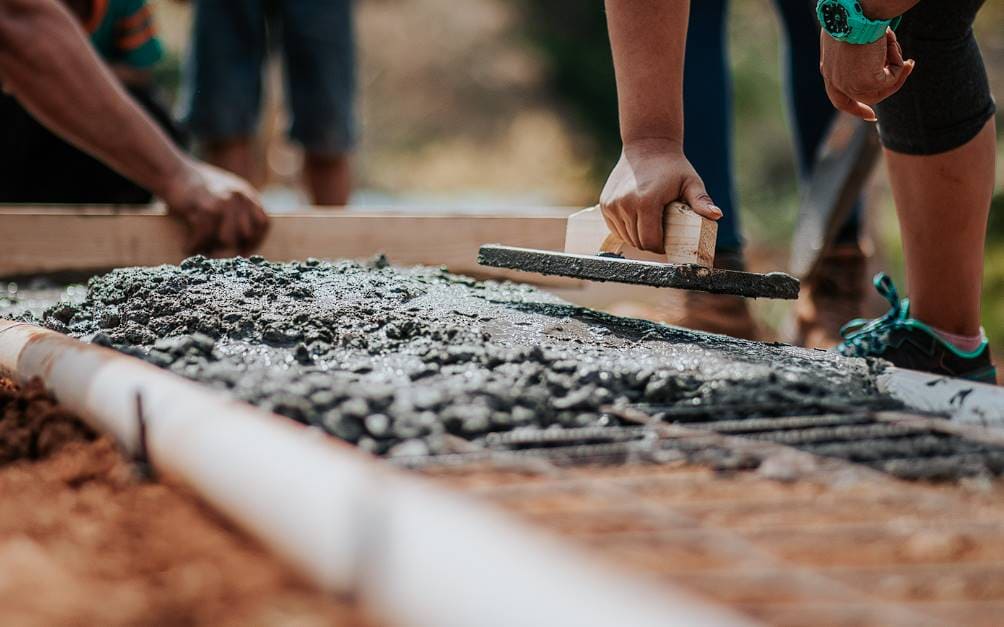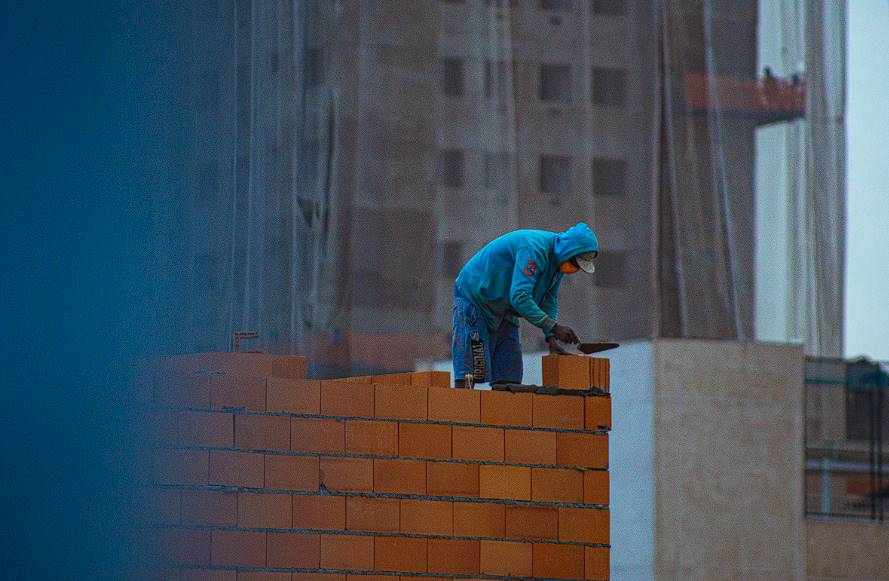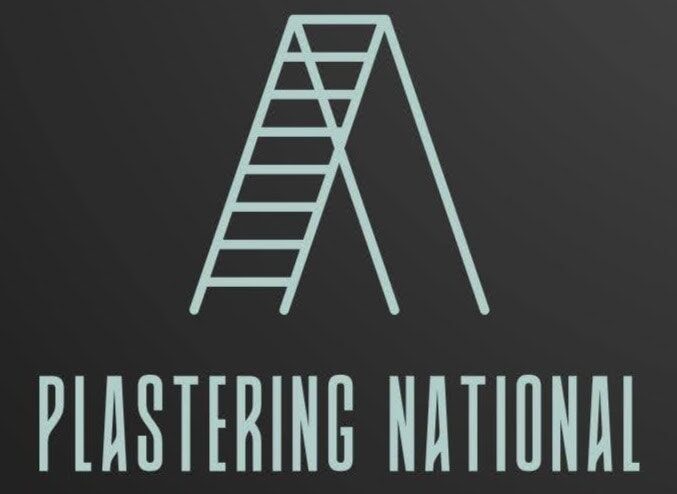Masonry has long been a cornerstone in construction, renowned for its strength and durability. Plastering is vital in masonry, serving both functional and aesthetic purposes.
It involves applying a smooth coat of plaster to masonry walls, ceilings, or other surfaces.
This process enhances the appearance of structures and protects them from external elements, increasing their lifespan.
Let’s look at the importance of plastering in masonry, its various types, and how it contributes to internal and external finishes.
Let’s get straight to the point.
Plastering in masonry is essential for protecting and enhancing buildings’ durability and aesthetics. It creates a smooth surface, strengthens masonry, and shields it from weather and fire damage.
Common plaster types include lime, cement, gypsum, acrylic, and polymer-based plasters, each with specific uses for interior and exterior applications.
Sustainable plastering practices focus on using eco-friendly materials, reducing waste, and improving energy efficiency.
Quality plastering extends a building’s lifespan, adds value, and supports environmentally responsible construction.
The Importance And Function Of Plastering In Masonry

Plastering in masonry is a critical step in construction that goes beyond enhancing the visual appearance of a building. It is essential in improving masonry surfaces’ structural integrity, durability, and functionality.
Whether for residential, commercial, or industrial buildings, plastering serves multiple functions, each of which contributes to the overall value and longevity of the construction.
Below are the key reasons why plastering is indispensable in masonry construction:
1. Surface Protection
Plaster acts as a protective layer, shielding masonry from various external factors that could compromise the structure’s integrity over time. This protective barrier prevents the penetration of:
- Rainwater can lead to dampness, mould growth, and erosion of masonry.
- UV rays can weaken surface materials over time, causing fading or degradation.
- Wind and other harsh environmental elements can wear down exposed masonry, making it vulnerable to cracks and structural damage.
2. Increased Durability
By reinforcing masonry with a strong plaster layer, buildings become more durable and resistant to everyday wear and tear. Plastering helps in:
- Reducing the need for frequent maintenance and repairs.
- Enhancing the resistance of masonry to physical impacts or abrasions.
A well-plastered structure will generally last longer and stay in better condition, reducing long-term costs associated with maintenance.
3. Enhanced Fire Resistance
Plastering, especially when using materials like gypsum, adds an extra layer of fire resistance to masonry walls. This provides a significant safety advantage by:
- Delaying the spread of fire within a building.
- Protecting the structural elements of a building during a fire emergency gives occupants more time to evacuate safely.
4. Even Surface And Finish
Masonry surfaces are often uneven or rough after construction. Plastering provides a smooth, uniform finish, transforming the raw surface into one that is:
- Suitable for decorative treatments, including paint, wallpaper, or other finishes.
- Aesthetically pleasing, with a sleek and professional appearance.
5. Concealing Imperfections
Plaster can effectively hide imperfections such as:
- Cracks, joints, and minor flaws in the masonry work.
- Only some textures or gaps may detract from the overall look of the structure.
This ability to conceal imperfections contributes to a refined and polished finish, enhancing the building’s appeal.
6. Sound Insulation
Thicker layers of plaster contribute to soundproofing, making the indoor environment quieter by:
- Absorbing noise from outside sources like traffic or nearby construction.
- Minimising echoes within the interior space, thus creating a more comfortable living or working environment.
7. Thermal Insulation
Plastering also contributes to the thermal efficiency of a building. Certain types of plaster, such as lime or clay-based, have natural insulation properties. These plasters:
- Regulate indoor temperatures by absorbing excess moisture and releasing it when needed.
- Help maintain a comfortable living environment, reducing the reliance on heating or cooling systems and ultimately saving energy.
8. Aesthetic Appeal
Plastering offers a versatile canvas for various aesthetic enhancements. It provides:
- A smooth surface for painting, wallpapering, or textured designs.
- There are options for creative decorative techniques, like stucco or intricate moulding, which can elevate the appearance of both interiors and exteriors.
9. Structural Integrity
Beyond aesthetics, plastering reinforces the structural integrity of masonry. Properly applied plaster can:
- Prevent the spread of small cracks that could otherwise compromise the entire structure.
- Maintain the overall stability and strength of the building, particularly in areas subject to minor movements or shifts.
10. Value Addition
A well-plastered building adds significant value in terms of both functionality and aesthetics. High-quality plastering can:
- Increase the market value of a property due to its enhanced appearance and durability.
- Improve the building’s overall performance in terms of insulation, protection, and longevity, making it more attractive to buyers or tenants.
Types Of Plastering Materials

Choosing the right plastering material is crucial for achieving masonry’s desired finish and functionality. Here are the most common types of plastering materials:
1. Lime Plaster
- Made from lime, sand, and water.
- Ideal for older buildings due to its breathability, allowing moisture to escape.
- Often used in restoration projects for its gentle, textured appearance.
2. Cement Plaster
- Composed of cement, sand, and water.
- It is known for its strength and durability and is suitable for indoor and outdoor use.
- Highly resistant to moisture, making it ideal for regions with extreme weather conditions.
3. Gypsum Plaster
- Commonly known as Plaster of Paris.
- Easy to apply, quick-drying, and provides a smooth finish.
- Popular for interior walls and ceilings due to its fire-resistant properties.
4. Acrylic Plaster
- Made from acrylic resins and additives.
- Flexible and less prone to cracking, it suits interiors and exteriors.
- Available in various textures and finishes for diverse design options.
5. Polymer-Based Plaster
- Contains polymer additives to enhance strength and adhesion.
- Suitable for high-traffic areas that require greater impact resistance.
- Often used in public buildings and commercial spaces.
6. Clay Plaster
- Natural plaster is made from clay, sand, and straw.
- Offers excellent thermal and acoustic insulation.
- Favoured in eco-friendly and sustainable building projects.
7. Ready-Mix Plaster
- Available in pre-mixed bags, requiring only the addition of water.
- Convenient for small projects or DIY tasks.
- Provides consistent quality and saves time during application.
Plastering For Internal And External Masonry
Plastering techniques and materials differ depending on whether they are applied to the interior or exterior of a building. Each has its specific requirements based on exposure to elements and desired finish.
External Plastering
- Purpose: External plastering protects the masonry from harsh weather, preventing water infiltration and damage.
- Waterproofing: Plaster for exterior use often includes waterproofing additives to ensure durability against rain and moisture.
- Texture and Finish: Rougher textures are common to enhance grip for paint or coatings.
- Weather Resistance: Cement and polymer-based plasters are preferred for their ability to withstand varying weather conditions.
- Application Techniques: Generally involves multiple, thicker layers to provide adequate protection.
Internal Plastering
- Smooth Finish: Internal plastering aims for a smooth, even surface suitable for painting or decorative finishes.
- Sound and Thermal Insulation: Special plasters can reduce noise transmission and improve thermal efficiency.
- Moisture Control: Moisture-resistant plasters prevent mould and dampness in high-humidity areas like bathrooms.
- Aesthetic Flexibility: Interior plaster can be easily painted or wallpapered, offering more design possibilities.
Environmental Sustainability In Plastering
Modern plastering practices increasingly focus on sustainability, aiming to reduce the environmental impact of construction. Here’s how sustainable plastering contributes to eco-friendly building:
- Eco-Friendly Materials: Natural plasters like lime or clay reduce energy consumption during production compared to synthetic materials.
- Resource Conservation: Efficient mixing and application techniques help conserve water and reduce material waste.
- Low-Emission Plasters: Low-carbon materials and incorporating recycled content in plasters help lower greenhouse gas emissions.
- Low-VOC and Non-Toxic Options: Plasters with low volatile organic compounds (VOCs) ensure better indoor air quality, reducing health risks for occupants.
- Waste Reduction and Recycling: Recycling leftover plaster and packaging minimises construction waste, promoting a circular economy in building projects.
- Biodegradability: Natural plastering materials like lime and clay are biodegradable, making disposal more environmentally friendly.
- Durability and Longevity: Longer-lasting plaster materials reduce the need for frequent repairs, lowering the building’s overall environmental footprint.
Conclusion
Plastering is an integral part of masonry construction. It enhances aesthetics and improves structures’ durability, functionality, and sustainability.
Various plastering materials, from lime and cement to modern acrylic and polymer-based options, offer solutions for different building needs.
Choosing the right plaster for internal finishes or external protection can significantly impact the structure’s longevity and appearance.
Adopting sustainable plastering practices is essential in reducing the carbon footprint of construction.
Builders can create more environmentally responsible and resilient structures by prioritising eco-friendly materials and efficient techniques.
Investing in quality plastering adds value to a property and supports the creation of healthier and more sustainable built environments.
Frequently Asked Questions
What is plastering?
Plastering is a construction technique that involves applying a smooth and even layer of plaster material onto masonry surfaces, such as walls and ceilings. It serves both functional and aesthetic purposes, providing protection, durability, and a finished appearance to the building.
What are the common types of plastering materials?
Common plastering materials include lime plaster, cement plaster, gypsum plaster (plaster of Paris), acrylic plaster, polymer-based plaster, clay plaster, and ready-mix plaster.
What is the purpose of plastering in masonry?
The primary purpose of plastering in masonry is to protect the underlying surface from weather elements, improve durability, and provide a smooth and aesthetically pleasing finish.
Is plastering necessary for both interior and exterior surfaces?
Yes, plastering is essential for both interior and exterior surfaces. External plastering provides weather resistance and protection against environmental factors, while internal plastering offers a smooth surface for interior finishes and enhances aesthetics.
How can I choose the right plastering material for my project?
The choice of plastering material depends on various factors, including the project’s location, the desired finish, and the specific needs of the building. Consult a professional plasterer or contractor to determine the most suitable material for your project.

